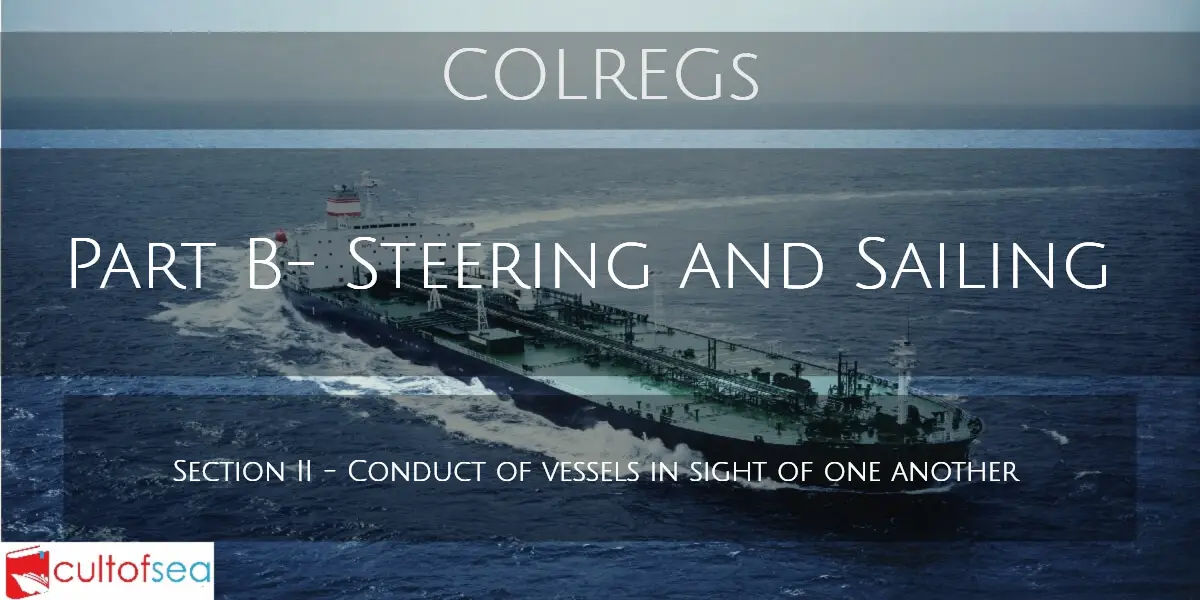Section II – Conduct of vessels in sight of one another
Rule 18: Responsibilities between vessels
Except where rule 9, 10, and 13 otherwise require:
(a) A power-driven vessel underway shall keep out of the way of:
(i) a vessel not under command;
(ii) a vessel restricted in her ability to maneuver;
(iii) a vessel engaged in fishing;
(iv) a sailing vessel;
Understanding, and complying with the Rules, the above are to be committed to memory and applied when meeting any of the named types of vessels.
Except if the situation is within a TSS or a narrow channel or if an overtaking situation arises. Then the Rules named above would take precedence if they so require.
(b) A sailing vessel underway shall keep out of the way of:
(i) a vessel not under command;
(ii) a vessel restricted in her ability to maneuver;
(iii) a vessel engaged in fishing;
(c) A vessel engaged in fishing when underway shall, so far as possible, keep out of the way of:
(i) a vessel not under command;
(ii) a vessel restricted in her ability to manoeuvre.
(d)
(i)Any vessel other than a vessel not under command or a vessel restricted in her ability to maneuver shall, if the circumstances of the case admit, avoid impeding the safe passage of a vessel constrained by her draft, exhibiting the signals in Rule 28.
Understanding, and complying with the Rules, the above are to be committed to memory and applied when meeting this type of vessels.
Except if the situation is within a TSS or a narrow channel or if an overtaking situation arises. Then the Rules named above would take precedence if they so require.
For example, in a TSS or a Narrow channel if a vessel cannot permit an overtaking by a Deep drafted vessel then although she is in way impeding the passage but as per that particular Rule she is within complying with the Rules.
(ii) A vessel constrained by her draught shall navigate with particular caution having full regard to her special condition.
Meaning: The deep drafted vessel should not take undue advantage of her condition and impose on other vessels to give way to her. She should navigate with full alertness and with regard to her draft. She should be within the safe speed and be able to be stopped or slowed down to avoid risky situations.
(e) A seaplane on the water shall, in general, keep well clear of all vessels and avoid impeding their navigation. In circumstances, however, where risk of collision exists, she shall comply with the Rules of this Part.
Meaning: Since a seaplane being not very maneuverable, may cause undue uncertainty for other vessels she has to keep clear, if however, a risk exists then she has to behave as a vessel and take action as per the Rules.
(f)
(i) A WIG craft shall, when taking off, landing and in flight near the surface, keep well clear of all other vessels and avoid impeding their navigation;
(ii) a WIG craft operating on the water surface shall comply with the Rules of this Part as a power-driven vessel.

i would like to know what action to take if you( PDV more than 20m) are using the TSS and the is NUC or CBD crossing the TSS in a collision course.
To answer above:
1. An NUC vessel will be unable to manoeuvre as required by the ROR and hence unable to keep out of the way of another vessel. (Rule 3F)
2. A CBD vessel shall navigate will particular caution and should not impede the passage of a PD more than 20m in a TSS. (Rule 18 – Except where Rules 9,10,13 otherwise require -**important. line)
Hello, Seaplane must keep well clear of all VSL and avoiding impeding their navigation, but when ROC become involve, she must comply rules of PartB, But what rules of partB she must comply??